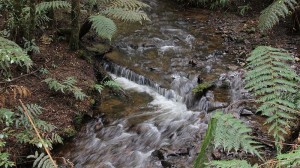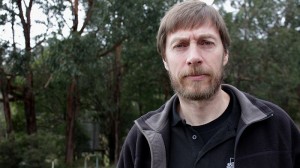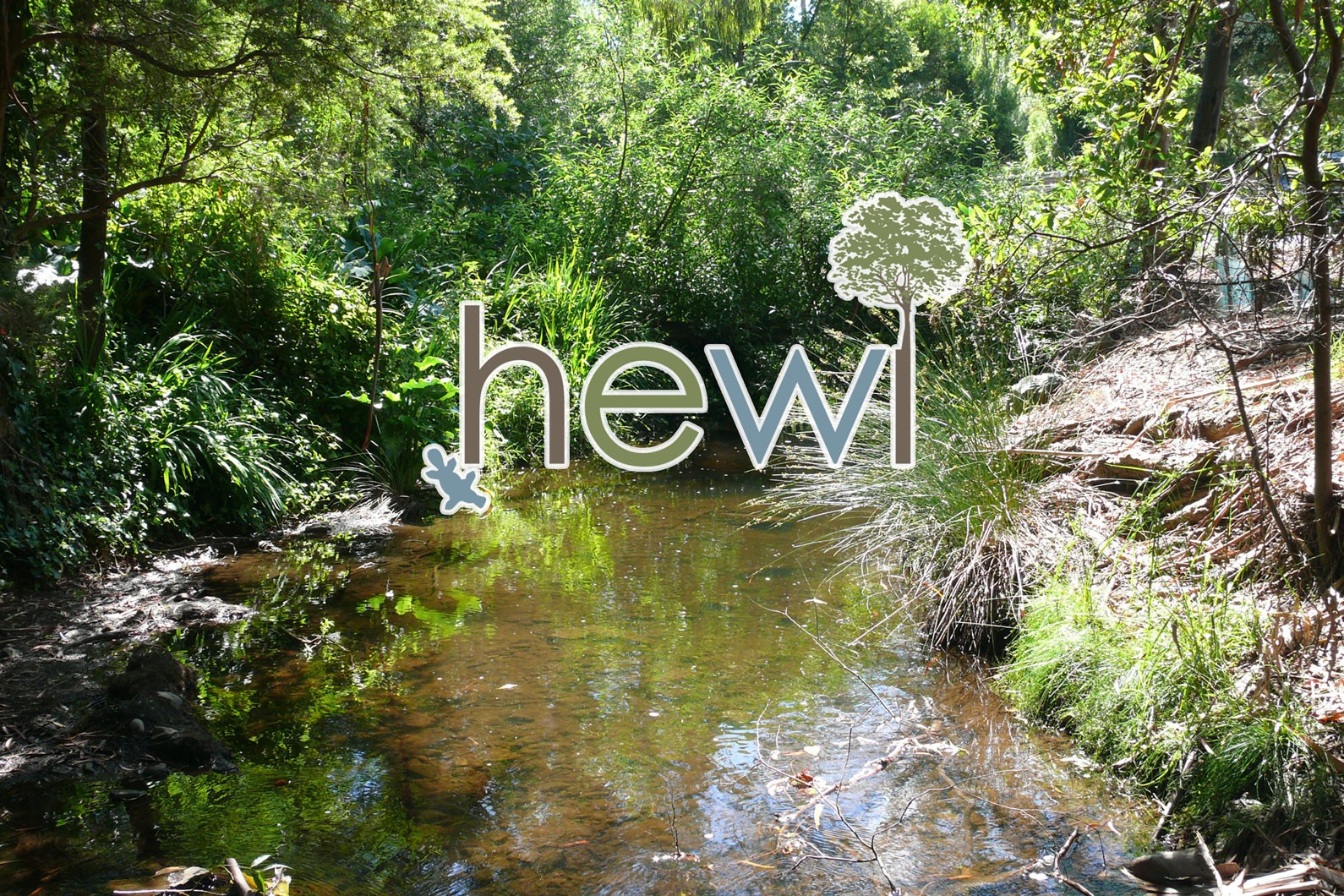Momentum is growing behind a campaign to create a new national park, running from the Central Highlands to West Gippsland in Victoria.
 Australian National University researcher David Blair says oldgrowth
Australian National University researcher David Blair says oldgrowth
forests contribute to water production and store carbon.
(ABC Gippsland: Jenni Henderson)
 David Blair, a researcher from the ANU, who is part of the
David Blair, a researcher from the ANU, who is part of the
original group of researchers behind the proposal to create the
Great Forest National Park. (ABC Gippsland : Jenni Henderson)
The Great Forest National Park proposal is gathering followers online through a website and social media portals like Facebook where more than 5,000 people have ‘liked’ the suggestion of a new park for the state. Prominent environmentalists Tim Flannery and Bob Brown have lent their support to the campaign. In the lead-up to the state election the Victorian Greens have included the proposal in their election platform: the Greens candidate for the seat of Melbourne, Ellen Sandell, announced her support for the creation of the park.
The Royal Society of Victoria is the most recent organisation to join 16 other environment groups
backing the proposal. The society was also involved in lobbying for the creation of the popular Wilson’s
Promontory National Park in the early 1900s.
Bernie Mace from the society said the creation of the park would clearly signify to the Australian public the value placed on old growth forests.
“We find that tourists that come to the area are astounded to find that beautiful areas of forests are
being sacrificed to the timber industry,” he said.
The park requires approval from the Victorian State Government and a change to the National Parks Act to become a reality.
Both the Victorian Environment Minister, Ryan Smith and Agriculture Minister, Peter Walsh, have declined to comment on the proposal.
The proposal
The Great Forest National Park proposal would join existing state forests, areas of logging, and public and private land into one conservation network of 355,000 hectares, stretching from Whittlesea to Erica.
The area is mostly comprised of mountain ash forests, containing some trees that are over 70 years old.
These trees have survived the 1939 and later 2009 bush fires which destroyed much of the surrounding
bush.
Researchers from the Australian National University were the first to propose the creation of the national park. They have been studying the ecology of the area for over 30 years.
David Blair is one of those researchers. He stresses the importance of conserving the area as soon as
possible. “We’re actually on the edge of seeing a collapse of this system across this forest type. It’s really at a crunch time and we need to decide what we do, particularly with the 1939 forest age class because, being 75 years old, we need to decide as a society do we allow that forest to grow old or do we keep cutting it as we’re currently doing,” he said.
The critical elements of this environment are older trees with hollows which are dwindling in number and are habitats for possums, gliders and a number of bird species.
“We’ve got about 1 per cent old-growth left in the landscape, where pre-European settlement that would be around 60 per cent of the landscape,” Mr Blair said.
Old-growth forests such as these help to produce more water and store more carbon than younger forests. The area is also home to the majority of the remaining Leadbeater’s Possums, Victoria’s faunal emblem, which is currently an endangered species.
The population of this animal was almost halved due to the 2009 bushfires which destroyed most of its habitat. The Victorian Government set up an advisory group for the animal last year which recommended protecting at least 30 per cent of existing areas old growth forest whilst maintaining the timber industry in the area. The government has accepted all the recommendations and plans to implement them over the next five years.
Mr Blair said the recommendations don’t go far enough to protect the forest and the Leadbeater’s possum. “The current regulations… are very poor and don’t adequately protect the species. The protection of old growth only relies on there being a five-hectare or greater patch of forest; that’s not what we see in the landscape. It’s really rare to have significant large patches of old growth left in this landscape,” he said.
Tourism
Nearly 100 businesses have declared their support for the creation of the national park. Wayne Heywood is the director of an ecotourism business that operates in the area. He said the creation of a park would enhance tourism and have flow on benefits for the Victorian economy.
“[National parks] really elevate an area to say that we care and protect the places that we invest in. Those trees are worth more standing up than they are lying down. When you are providing tours into an area and celebrating the natural wonders, it’s a lot easier to show it when that forest hasn’t been logged,” he said.
